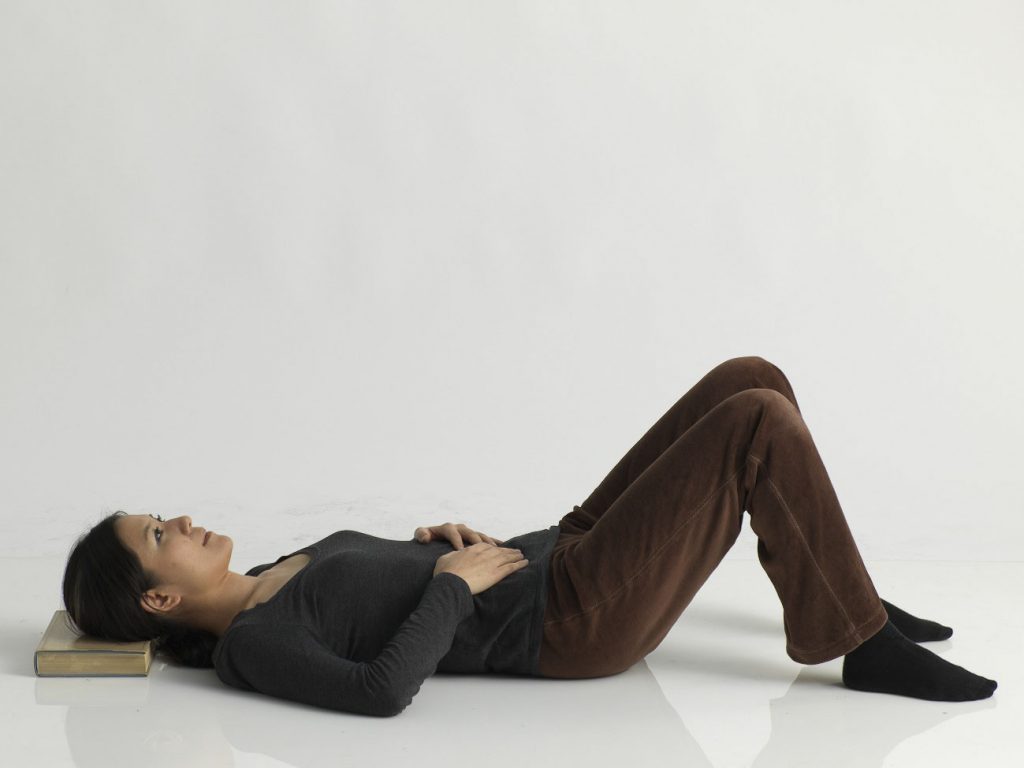
Working from home
An ironing board can become a sit stand desk. It’s adjustable to suit different height chairs. It can be raised up if you want to stand. And if you’re demonstrating something, you can alter the height accordingly. There’s more versatility to an ironing board than meets the eye!
A larger sit stand desk would be more appropriate if you need more space on your desk, whether for work or study or for a hobby. But for simple day to day usage, an ironing board is a simple and effective solution and doesn’t take up too much space.
Posture – shoulders raised too high
When typing, we want to have relaxed shoulders. If our chair is too low, our shoulders will raise up to our ears. The two options are to raise the chair height or to lower the table height. At home, most people don’t have adjustable height chairs. They may be sitting on a dining chair or a chair in the bedroom. So this is where an adjustable height table comes in. Lower the ironing board (or sit stand desk) and that will be more comfortable.
If you don’t have an ironing board or a table that you can alter, try putting some books or cushions on the chair. That might help with your shoulders. But then are your feet dangling? If so, put some books or cushions to rest your feet onto.
Posture – table too low
If you can’t adjust your chair and your table is too low, you might be hunched over to the desk, rounding your back and neck. This is where it’s useful to raise the height of the table. If you don’t have an ironing board, you can put your laptop or keyboard on some books so that when you’re typing, your forearms are parallel to the keyboard.
Talk with me
In my online sessions, I can have a look at your furniture set up and advise on any adjustments needed. I have a very practical approach and try to use equipment you already have in your house – cushions or pillows, books, recipe stands etc – rather than advocating buying something expensive. If you do want to buy some furniture, I can recommend what to look out for. As well as my many years of Alexander experience, I’m a trained DSE ergonomics assessor and know what to look out for.







